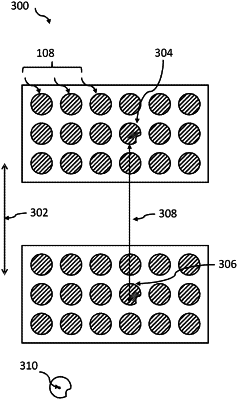| CPC G01C 11/02 (2013.01) [G01C 11/06 (2013.01); G02B 21/26 (2013.01); G02B 21/367 (2013.01); G02B 21/06 (2013.01)] | 17 Claims |

|
1. A distance determination system for a microscope system, the distance determination system comprising:
a sample stage having a placement surface configured to hold a sample carrier, wherein the sample stage is displaceable along at least one direction of extent of a sample plane;
an overview camera with a non-telecentric objective configured to produce digital images, wherein the overview camera is directed at the sample stage;
an evaluation unit connected to the overview camera, the evaluation unit including
a storage system configured to store at least two recorded digital images of the sample stage at different viewing angles; and
a trained machine-learning-based system configured to identify corresponding structures of the sample carrier placed into the sample stage in the two recorded digital images, wherein the trained machine-learning-based system comprises a trained reference model that is trainable by way of a set of annotated training images of sample carriers in a manner such, and the trained machine-learning-based system is thus adapted such, that corresponding structures in the at least two recorded digital images are associable with one another; and
a distance determination unit configured to determine a distance of a reference point of the sample carrier from a reference point of the overview camera based on the different viewing angles onto the sample stage and a pixel distance of the two recorded digital images with respect to one another using the associated corresponding structures contained in the at least two recorded digital images,
wherein the trained machine-learning-based system is configured to classify individual pixels of the at least two recorded images, and
wherein an optimization of a target function having a plurality of corresponding structures of the at least two recorded digital images is used as input data, wherein a result of the target function indicates the pixel distance.
|